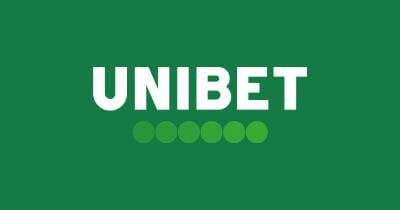SpreadEx
SpreadEx was founded just before the turn of the century, quickly becoming a top spread betting platford. It has since expanded into traditional fixed odds betting. They are one of the top tennis betting sites in the UK.

- Lots of markets on major tournaments
- Spread betting available
- Less celebrated events covered
Bottom line:
SpreadEx provides tennis punters with an array of markets on both their spread betting and traditional betting platforms.
Why we like SpreadEx
SpreadEx offer odds for a wide range of tennis competions. Obviously they cover the grand slams thoroughly, with a range of betting options, however, they also cover lower tier professional tournaments, such as the Challenger tour. Their well-presented statistics are an added benefit. There is also the chance to switch between spread betting and fixed odds wagers. All of which make it a great place to bet on tennis.
What SpreadEx offers you
- Loads of tennis options: SpreadEx go the extra mile with their tennis markets.
- Spread betting available: Switch between fixed odds and spread betting.
- Well-known and lesser-known fixtures: SpreadEx pays attention to the high-profile and lesser-watched fixtures. You can find a great range of competitions on their website.
- Live streaming: Some tennis tournaments are available to live stream when signed in on the SpreadEx site.
Unibet
A major player in sports betting across Europe, Unibet was originally founded in 1997 and launched online in 1999. Tennis is huge in continental Europe and, as a European focused bookmaker, Unibet provide great features, markets and prices for tennis.
Unibet cover the Slams and the big events on the ATP and WTA circuits. In addition the bookie also provides markets for the Challenger Tour and the UTR Pro Series. Singles and doubles, and the mens’ and womens’ games are all catered for.

- In depth coverage, many tennis markets
- Competitive odds
- Tennis specific promotions
Bottom line:
Unibet offer fantastic live betting features for tennis with ball by ball action betting. Unibet stream a vast amount of tennis year round from the ATP and WTA, to compliment their excellent live betting content.
Their odds are competitive, with handicaps being a particular strength.
Unibet is definitely among the UK’s best betting websites for tennis. If tennis is your main sport Unibet is a go-to bookmaker.
Why we like Unibet
Unibet cover a large amount of tennis markets with impressive depth. They cover the Slams and the big events on the ATP and WTA circuits. In addition the bookie also provides markets for the Challenger Tour and the UTR Pro Series. Singles and doubles, and the mens’ and womens’ games are all available to bet on. Unibet offers fantastic live betting features for tennis with ball by ball action betting. Their odds are competitive, with handicaps being a particular strength.
What Unibet offers you
- Brilliant tennis promotions: For the top tournaments you will find attractive tennis promotions and features, including free bet clubs and enhanced winnings promotions.
- Competitive odds for tennis: You get good value odds for tennis at Unibet. Handicap bets are especially good value.
- Vast tennis markets: Unibet cover a vast range of tennis markets, with many options available pre-match and live.
- In-play betting: Unibet has great in-play options and they live stream many tennis events.
BetVictor
BetVictor has been part of the UK betting scene since 1946. A well-established and reliable company, it has developed into an excellent online bookmaker. BetVictor cover a wide range of Tennis events, offering competitive odds.
BetVictor offer a big range of markets for tennis, along with competitive odds. Obviously the Grand Slams and the ATP and WTA tour events are catered for, however, BetVictor also has the Challenger Tour and other competitions available to bet on. The in-play tennis section is excellent, with an array of markets.
The bookie regularly has accumulator offers for tennis and customers can use the bet builder to customize and control their tennis wagers.

- Good range of tennis markets
- Blog includes a tennis section
- Competitive odds for tennis
Bottom line:
BetVictor offer a big range of markets for tennis, along with competitive odds. Obviously the Grand Slams and the ATP and WTA tour events are catered for, however, BetVictor also has the Challenger Tour and other competitions available to bet on. The in-play tennis section is excellent, with an array of markets.
Why we like BetVictor
BetVictor consistently offer competitive and attractive odds for tennis, both pre-match and in-play. They have depth to their tennis coverage and they run tennis specific promos. BetVictor can definitely be recommended as one of the UK’s best tennis betting websites.
What BetVictor offers you
- In-play tennis betting: Excellent in-play section for punters who like their betting live.
- Competitive odds on tennis: BetVictor offer punters attractive and competitive tennis odds.
- Large range of tennis markets: Like its main competitors, BetVictor covers the Slams and the top level mens’ and womens’ tours, along with the second tier tours.
- Tennis specific promos: The bookie regularly has accumulator offers for tennis along with other promos where tennis fans can take advantage.
Planet Sport Bet
Planet Sport are a familiar name to sports fans as a leading name in the media. They have branched out into sports betting with their betting website, Planet Sport Bet.

- Excellent range of tennis betting markets
- Acca bonuses
- Great website and app
Bottom line:
Planet Sport Bet have ACCA bonuses, solid odds and a great website and app.
Why we like Planet Sport Bet
Using the Planet Sport Bet website or app is a relaxed experience and punters can benefit from their ACCA Bonuses.
What Planet Sport Bet offers you
- Great app: Planet Sport Bet have a user friendly app and a great website. The bookie offers a fantastic betting platform whether on the app or the website.
- Accumulator Bonus:Planet Bet Sport offer a 50% bonus on accas. Place a £5+ all correct accumulator (Min. 5 selections) on sports and get up to a 50% bonus on your winnings.
- Cash out available: The bookie offers cash out on selected events
- Great in-play section
Check out the best betting sites in the UK with Betting.com.
How our experts choose the best sites to bet on Tennis
Bettors have many factors to weigh up when looking for a tennis betting site. The bookie must prove themselves to be reputable, trustworthy and properly regulated. The quality of odds offered are of great importance along with the design and feel of the website, promotions, in-play betting, live streaming and the quality and accessibility of customer service. To be ranked among the best tennis betting sites, bookmakers must rate highly in all of these areas.
Chris Sampson: Firstly I am looking for a trustworthy bookmaker, where making deposits and withdrawals is straightforward and efficient. I am looking for tennis betting sites in the UK to offer good quality odds, a large range of markets and promotions available throughout the year. Websites should be quick responsive and user friendly on both the desktop and the app.
Compare the best Tennis betting sites
Tennis is undoubtedly one of the most popular sports to bet on in Britain. Therefore it is an area which all of the leading bookmakers focus on, leaving punters with many options regarding promotions and offers.
Selecting the best tennis online betting site in 2025 is about looking at the whole service that each bookie provides for the sport. It will also come down to personal preference of punters and areas which the individuals prioritise. We’ve compared the top tennis betting sites:
| Site Name | Betting.com Rating | Best For | Full Review |
| Bet365 | 4.8/5 | Tennis bet builder | Full bet365 Review |
| SpreadEx | 4.7/5 | Spread betting | Full SpreadEx Review |
| Unibet | 4.7/5 | Huge variety of tennis markets | Full Unibet Review |
| BetVictor | 4.6/5 | Quality odds for tennis | Full BetVictor Review |
| Planet Sport Bet | 4.5/5 | Acca bonuses | Full Planet Sport Bet Review |
How to choose the best site for you
Identifying the best tennis betting sites isn’t an easy task with so many options out there. You can only get a real idea of what works for you by trying sites out and extensively researching their promotions.
When looking at tennis online betting sites, these seven points are important to keep in mind:
- Safety comes first: To keep your cash and data safe, you should always play on licensed and secure betting sites. Check out licensing information on the bookmaker’s web page.
- Compare welcome offers: Not all welcome offers are the same. Each punter has different betting habits and will value different things when signing up to a new bookie, so make sure you find a site with a welcome offer which suits you. If you are mainly looking to bet on tennis some sportsbooks will have tennis specific welcome offers.
- Analyse their tennis prices: All bettors want the best odds. It is worth comparing sportsbooks to see which have the most competitive prices. Check out who offers the best value on specific tournaments and competitions, and compare bookmaker’s odds over three matches or two or three tournament outright bets to evaluate their consistency.
- Consider payment and banking options: Ensuring you can deposit and withdraw money safely and quickly is vital. It is worth seeing which bookies offer certain payment methods and comparing the fees involved and timescale for receiving your winnings.
- Your bookie should be established and trusted : The best tennis betting sites will retain customers through the quality of their odds and markets, their integrity and their levels of customer care. You must feel secure when placing your bets.
- Betting on the move: Mobile apps are now a major part of the gambling industry. Being able to scroll through odds, live stream and contact customer service through your phone or tablet is vital.
- Try signing up: Registration with a new bookmaker should be a quick, smooth and straightforward process. The only way to get a feel of a betting site is to sign up yourself and look at what they can offer. Most trusted bookies require you to provide documentation to verify your account as part of their Know Your Customer (KYC) scheme.
Betting on Tennis explained
Tennis betting has become very popular, a major factor being the huge impact made by Novak Djokovic, Roger Federer and Rafael Nadal. The Big Three have taken the sport to another level and punters have responded. Even with Federer retired and Djokovic and Nadal in their mid-30s there appears to be a huge demand for Tennis markets. This is fueled by the prospect of Djokovic and Nadal extending and breaking records and the emergence of exciting young players such as Carlos Alcazar, Félix Auger-Aliassime and Stefanos Tsitsipas on the ATP scene. More interest is added by the Briton Andy Murray, a rival to the Big Three in his day, striving to stay at the top, and the enigmatic Australian star Nick Kyrgios. The womens’ game is also at an exciting phase. Serena Williams may be recently retired, but young players of the calibre of Iga Swiatek, Aryna Sabalenka, Coco Gauff and Emma Raducanu provide a lot of interest.
Tennis runs throughout the year, with a short off season in December, though there are usually some exhibition matches to keep punters interested. Tennis’ schedule includes four Gram Slams and over 1500 other tournaments, which attract bettors, tipsters, and bookmakers.
Odds
The best tennis betting sites in the UK will display odds for many different markets. Firstly you will find odds for the outright winner of tournaments. These will change on an almost daily basis due to results, and form. Each match will display odds for the result. Again these will move as things change (injuries, changes to form, playing styles, weather etc.) in the build up to the game. Generally if you add up the percentage probability of each of the two possible outcomes you can determine whether the odds are good value. Naturally the three percentages should make 100, however, that would leave the bookie without profit. What is a fair margin varies from sport to sport, however in tennis 110 and under is considered fair, while the bookies who offer the best tennis odds usually average around 105 (95% payout). Within each match you can find other markets to bet on such as games and sets.
Picks
Just like selecting your preferred bookie, there is a lot to consider when making tennis picks. Recent form, injuries and style of play/characteristic are all important factors when betting on tennis.
Types of Tennis bets
Tennis bettors have never had more options available. Punters can, for example, bet on outright winners, match results, player props and match stats. Accas and multiples are very popular.
Futures Bet
This is a bet on an event which is often some way down the line. Punters often bet on outright winners (for example the winner of the Wimbledon Mens’ Singles).
Moneyline Bets
For an individual match punters bet on which player will win an individual match.
Over/Under (Total) bets
Over and under tennis betting involves predicting that a match will not surpass/ or will go above a given number of sets or games. Some bookmakers also allow you to bet that the scores will not exceed or will be more than the set number.
Multiple-Game Bets
Parlay: A parlay involves more than one wager combined together for greater odds. You can place a same game parlay — multiple events from one matchup — or alternatively, events across multiple games. Comprising three doubles and a treble, a Trixie is three selections and four bets. At least two of the selections must land to guarantee a payout.
As stated earlier accumulators, where punters try to match a number of results, are popular in tennis betting. Accumulators combine multiple selections into one bet and are among the most popular forms of betting on tennis. This is because they offer the potential reward of big returns for small stakes as the winnings from each selection are placed on the next one.
The obvious risk is that all the bets have to win for the bettor to receive a payout. However, some bookmakers, offer accumulator insurance so if one of your selections (minimum five selections) lets you down you will receive your stake back as a free bet.
Handicap betting
Handicap betting helps punters get better odds if a game appears to be one-sided.
Props markets
Prop markets are becoming more common, and they allow customers to bet on anything that may unfold during a game.
Common prop bets include:
Correct score
Set winner
Depending on the bookie, there may be options to include props in a mixed parlay. Many bookmakers have tennis bet builders and the option to tweet your customised bets to the bookie to get odds quoted.
Prop markets become more limited with smaller/less popular matches.
In-play betting
Lots of tennis bettors enjoy the excitement of live betting as the match flows. Bettors can follow the action then use their judgement to place bets as the game unfolds. Live-streaming has made this more popular. Punters can bet ball by ball with the bookies who provide the best in-play service.
Tennis betting strategies
It is important to do some background research before making your wager. Look into form, injuries, styles of play. Try to apply your knowledge and understanding of the game to your selections. Look at the types of bets your prefer, accas, prop markets, moneyline etc. and develop your own strategy. Above all, gamble responsibly.
Popular Tennis events to bet on
Tennis bettors have never had more choice in terms of matches to bet on. However, it is the four Grand Slams which are still the most popular.
- Australian Open: When it’s a New Year, Australian Open betting is just around the corner, with this being the first Grand Slam tennis tournament of the season. The best tennis betting sites roll out the red carpet when it comes to Australian Open odds. The Australian Open is played on hardcourt surfaces and is a knockout tournament where the world’s top-ranked players are seeded in the draw. We kick off the first week with a spate of first round, second round and third round matches, before the leading players battle it out at the business end of proceedings.
- French Open: Tennis fans are always searching for French Open betting offers when the clay court season starts, with this tournament traditionally taking place in late May and running into June. Like all other Grand Slam competitions, this competition runs for two weeks, with this being the only one that is played on clay. That certainly plays into the hands of specialists on this surface. The French Open is a giant knockout tournament, with the ladies singles matches being best of three sets and the men’s singles being best of five sets. We tend to see familiar faces at the business end of both singles tournaments due to the fact that certain players thrive more than others when it comes to the conditions at Roland Garros.
- Wimbledon: Make sure you check out Wimbledon free bets for what is the only grass court Grand Slam tournament of the calendar year. All eyes are on SW19 when this competition comes around, with the tournament taking place in the final week of June and the first week of July. We have seen players such as Roger Federer and Pete Sampras dominate the men’s singles at Wimbledon over the past few decades. Betting on Wimbledon is available from the first round onwards, with this being another straight knockout tournament which is hugely historic. It is renowned for having a royal box on Centre Court and the high-profile players will regularly appear on this show court as they aim to navigate their way through to the latter stages.
- US Open: Flushing Meadows is the big stage when it comes to the US Open, with this tournament representing a final chance for the leading male and female players to land a Grand Slam victory for that calendar year. As you might expect, US Open tennis betting offers are hugely popular and it all starts with the outright betting market, where you can place wagers on the players you fancy to lift the trophy.US Open tennis traditionally takes place towards the end of August and runs into the beginning of September, with this New York-based tournament packed with betting opportunities. It’s a knockout tournament where the seedings loosely correspond with the current world rankings. The competition is played on hard courts, which often favour the big-serving baseliners.
- Summer Games: Summer Games tennis odds are available and this only comes around every four years, although some of the leading professional male and female players are hugely focused on landing a gold medal during their career. This is a knockout tournament where nations send their leading hopes and there are also doubles and mixed doubles events.
- ATP Tennis Betting: Although Grand Slam tennis tournaments always take centre-stage, tennis betting aficionados will also enjoy ATP Tour tennis betting on non-Grand Slam events. There are some huge men’s competitions that take place on this tour. All roads ultimately lead to the ATP finals tournament where the eight top-ranked players battle it out in two groups.
- WTA Tennis Betting: The leading women’s tennis players on the circuit compete against each other on this tour. You can bet on the outright market for each of the competitions on the tour, while the leading tennis betting sites will also offer a wide range of markets for every match that is taking place.
- Davis Cup: We love the chance to bet on the Davis Cup as this is a unique international tennis competition where nations compete against each other for honours. Singles and doubles matches determine the overall outcome of a tie. Sometimes we might get a group stage or alternatively it’s a knockout game where it’s winner takes all.
Check out the best betting sites in the UK with Betting.com.




